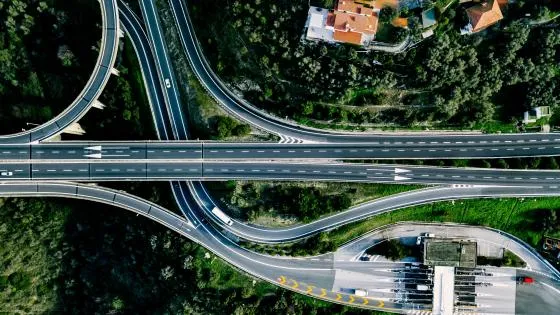Infrastructure development performs a pivotal function in shaping economies and influencing basic growth. From transportation networks to telecommunications systems, sturdy infrastructure serves as the spine of a thriving financial system. As nations continue to navigate the complexities of globalization, investing in infrastructure becomes increasingly more critical. This weblog will explore how infrastructure improvement drives financial increase through productiveness enhancement, task creation, foreign investment attraction, marketplace entry to improvement, and sustainability tasks.
Enhancing Productivity and Efficiency
One of the number one methods of infrastructure development that fosters monetary growth is using drastically enhancing productiveness and performance. Efficient transportation systems, which include highways, railroads, and ports, lessen travel time and transportation fees, permitting corporations to function greater efficiently. For instance, cutting-edge logistics networks can facilitate fast transport, benefiting e-commerce and manufacturing sectors.
Moreover, improvements in digital infrastructure—such as excessive-speed net—play a vital role in streamlining enterprise operations, specifically in sectors like Procurement in the Hotel Industry. Companies can leverage generation to optimize procurement tactics, talk with customers, and control delivery chains more efficiently. When businesses can operate more successfully, they can produce more items and services, in the long run contributing to a monetary boom.
Job Creation and Employment Opportunities
Infrastructure projects are notorious for their ability to create jobs, each at once and indirectly. During the development phase, lots of workers are hired, ranging from engineers and architects to employees and project managers. Once those tasks are finished, the jobs are maintained, as maintenance and operation roles turn out to be necessary.
Moreover, advanced infrastructure draws organizations to an area, stimulating task increase in different sectors. For example, a brand new toll road can make an area greater available, drawing in retail and hospitality businesses. The ripple effect can cause decreased unemployment costs and more desirable financial energy inside the area, demonstrating how important infrastructure development is for activity creation.
Attracting Foreign Direct Investment (FDI)
Countries with nicely-evolved infrastructure are greater appealing to foreign buyers. Infrastructure improvements—which include modern-day airports, dependable strength grids, and efficient transportation networks—reduce operating prices for groups and beautify the overall business surroundings. When overseas traders see that a rustic is committed to maintaining and enhancing its infrastructure, they are much more likely to invest.
For instance, countries like Vietnam and India have skilled sizable increases in overseas direct funding due to ongoing infrastructure improvement tasks. These investments not only effectively contribute to the local financial system but also lead to era transfer and information sharing, in addition to propelling monetary growth.
Supporting Small and Medium Enterprises (SMEs)
Infrastructure improvement is particularly beneficial for small and medium businesses (SMEs), which frequently lack the resources of larger organizations. Improved infrastructure provides SMEs with better access to markets, permitting them to attain extra customers and develop their groups. Efficient transportation networks make it less difficult for small agencies to supply substances and distribute products.
Additionally, cheap utilities and greater digital connectivity allow SMEs to perform greater competitively. Government regulations that help infrastructure development specifically concentrated on SMEs can foster entrepreneurship and innovation, main to a dynamic and various monetary landscape.
Improving Access to Markets
Access to markets is a vital thing for financial growth, and infrastructure improvement extensively enhances this right of entry. Efficient transportation structures facilitate the clean movement of products and offerings, both within nations and across borders. This ease of getting the right of entry helps organizations increase their customer bases, promoting trade and economic pastimes.
Furthermore, virtual infrastructure, including dependable internet connectivity, lets groups take part in worldwide markets. Companies can sell their products online, attracting clients worldwide. By enhancing admission to both local and worldwide markets, infrastructure development plays a critical function in using monetary increase.
Enhancing Public Services and Quality of Life
Infrastructure upgrades also expand to public services, which contribute to a higher quality of life for residents. Reliable transportation, healthcare centers, and educational establishments are important components of a thriving society. When infrastructure is advanced to assist these offerings, the general well-being of the population improves.
A more healthy and better-educated group of workers is extra efficient, in the long run reaping benefits to the economy. For instance, getting admission to fine healthcare can result in decreased absenteeism and advanced worker overall performance. Similarly, properly built academic facilities can foster an extra professional exertion force, riding innovation and economic progress.
Boosting Trade and Economic Integration
Infrastructure development is instrumental in boosting exchange and facilitating monetary integration. Modern ports, airports, and trade routes allow countries to interact in worldwide commerce greater effectively. This multiplied alternative can lead to financial increases as nations specialize in generating items and offerings wherein they have a comparative gain.
Moreover, improved infrastructure can decorate nearby financial integration. By growing go-border transportation networks, nations can create exchange corridors that benefit a couple of countries. This interconnectedness fosters collaboration, encourages investment, and drives an economic boom on a larger scale.
Promoting Sustainability and Green Economy Initiatives
As the sector increasingly prioritizes sustainability, infrastructure improvement has shifted in the direction of greener initiatives. Renewable electricity initiatives, green transportation structures, and sustainable construction practices not only benefit the surroundings but also create financial opportunities.
Investing in sustainable infrastructure can stimulate process growth in rising sectors, together with renewable strength. Countries that prioritize eco-friendly initiatives function themselves as leaders in the green economy, attracting investments and fostering innovation. For instance, the transition to electric-powered automobiles and the development of charging infrastructure can create new jobs whilst reducing carbon emissions. Additionally, making use of materials like Stainless Steel Coils for Sale in creation and infrastructure initiatives contributes to sustainability efforts, as these materials are durable, recyclable, and environmentally friendly.
Conclusion
In conclusion, infrastructure improvement is a cornerstone of monetary growth, influencing various aspects of society. By improving productivity and efficiency, creating jobs, attracting overseas investment, enhancing get right of entry to to markets, and selling sustainability, infrastructure projects pressure progress and prosperity. As governments and private sectors collaborate on infrastructure tasks, the ability for monetary increase stays sizeable.
Moving forward, it’s far more important to prioritize infrastructure funding to sustain competitive advantages in an increasingly interconnected world. Countries that apprehend the importance of infrastructure development and decide to ongoing upgrades may be highly located to thrive within the global economy, ensuring lengthy-time period increase and success.










